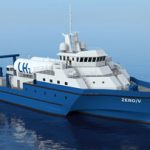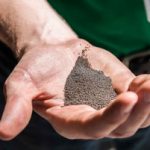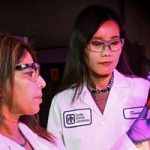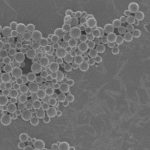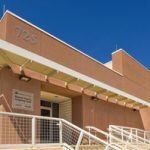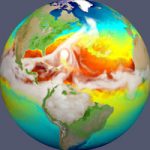Diesel doesn’t float this boat
Marine research could soon be possible without the risk of polluting either the air or the ocean, thanks to a new hydrogen fuel cell ship design and feasibility study led by Sandia. Hydrogen fuel cells have existed for decades, but the feasibility of a hydrogen-powered research vessel has never been studied or proven. Until now.
Generating electrical power from waste heat
Directly converting electrical power to heat is easy, but the opposite, converting heat into electrical power, hasn't been so easy — until now. Sandia researchers have developed a tiny silicon-based device that can harness what was previously called waste heat and turn it into DC power.
Raising the heat to lower the cost of solar energy
Sandia will receive $10.5 million from DOE to research and design a cheaper and more efficient solar energy system. The work focuses on refining a specific type of utility-scale solar energy technology, called concentrating solar power, which is appealing because it can supply renewable energy — even when the sun is not shining — without using batteries for storage.
Riding bacterium to the bank
What does jet fuel have in common with pantyhose and plastic soda bottles? They’re all products currently derived from petroleum. Sandia scientists have demonstrated a new technology based on bioengineered bacteria that could make it economically feasible to produce all three from renewable plant sources.
A splash of detergent makes catalytic compounds more powerful
Uniform catalytic compounds produced at Sandia don't just look nice, they outperform commercial varieties used as catalysts in solar cells and which could be used to produce clean-burning hydrogen fuel. If developed for industry, the new technology could improve performance while reducing costs of catalysts used everywhere from environmental cleanup to cancer treatment.
First wind blade from a 3-D printed mold, energy-saving nanoparticles earn Sandia national FLC awards
Sandia’s energy-saving nanomaterial window films and first wind turbine blades made from a 3-D printed mold earn national honors from the Federal Laboratory Consortium
Exploring Arctic clues to secure future with new Sandia, university partnership
The Arctic is undergoing rapid change, with sea ice melting and temperatures rising at a faster pace than anywhere else in the world. Understanding these changes is crucial for shaping and safeguarding U.S. security in the future, say Sandia scientists.
Sandia celebrates Earth Day
The spirit of the original Earth Day, which marked the birth of the modern environmental movement in 1970, was alive and well last week at Sandia's California and New Mexico campuses.
Sandia LEEDs the way with New Mexico campus certification
The U.S. Green Building Council has awarded the Sandia/New Mexico site a LEED v.4 for Campus Certification, the first such certification at a DOE lab. It's the largest LEED Campus Certification in the history of the program, as well as the first Version 4 certification in New Mexico.
Exascale
The Energy Exascale Earth System Model, or E3SM, is an earth modeling system developed by eight DOE labs and several universities working under the aegis of DOE's Office of Science. It is expected to have one of the finest resolutions ever achieved by supercomputers simulating aspects of the planet’s climate.
